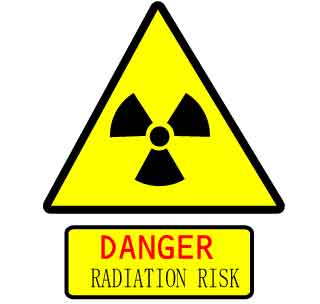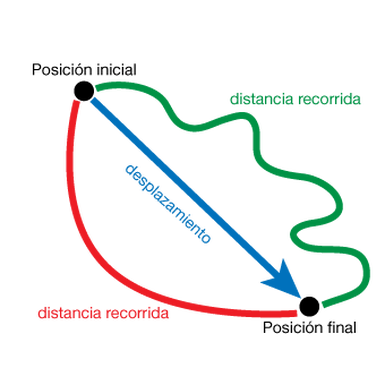Congrats!
Páginas
martes, 8 de octubre de 2019
sábado, 21 de septiembre de 2019
LAB EQUIPEMENT AND HAZARD SYMBOLS (PICTOGRAMS)
Each pictogram covers a specific type of hazard and is designed to be immediately recognizable to anyone handling hazardous material.
EXPLOSIVE SUBSTANCES:
Substances that explode near a flame. For example: Nitroglycerin
(dynamite).
FLAMMABLE SUBSTANCES:
Substances that burn easily. According to its ignition temperature,
we can distinguish between FLAMMABLE SUBSTANCES, EASILY FLAMMABLE
SUBSTANCES (at room temperature without energy input) or EXTREMELY
FLAMMABLE SUBSTANCES (whose ignition point is below zero).
Examples: Gases such as
propane and butane (natural gases), H2 hydrogen, white
phosphorus (it burns quickly and produces blanket of smoke).
OXIDISING SUBSTANCES:
Substances that oxidize other substances and produce an exothermic
chemical reaction (which releases heat) in case of being in contact
with flammable substances. Oxidisers are chemicals that facilitate burnings. Hydrogen peroxide (H2O2)
and oxygen (O2) are two examples of oxidizing agents.
Substances that once
absorbed (via INHALATION, SKIN CONTACT or INGESTION) are dangerous:
- IRRITANT SUBSTANCES: An irritant substance causes inflammation and
damages in skin and mucosa (eyes). For instance: Ammonia (NH3),
acids and bases, ... .
Exclamation Mark: An immediate skin, eye or respiratory tract irritant, or narcotic.
- CORROSIVE SUBSTANCES: Acids and strong bases destroy tissues and are corrosive to metals. For example: Sulfuric acid (H2SO4). chloridric acid (HCl) amd caustic soda (NaOH) cause thermal burns.
- ACUTE TOXICITY
SUBSTANCES: Substances that cause serious and chronic damage,
even death. For example: Cyanide salts (it is a poison for cellular
respiration), arsenic (As) and other heavy metals (mercury, cadmium,
lead, ...).
CARCINOGENIC
SUBSTANCES: Substances that increase the risk of suffering from
cancer. For example: asbestos, DDT, tobacco, benzene, etc.
Be
cautious when handling hazardous materials
(such
as
asbestos) and
wear
appropriate
masks and other protection
To learn more: HERE
BEHAVIOUR IN LAB
DRESSING FOR SAFETY
EMERGENCY EQUIPMENT
BEHAVIOUR IN LAB
DRESSING FOR SAFETY
EMERGENCY EQUIPMENT
BASIC CHEMISTRY LAB EQUIPMENT:
jueves, 25 de abril de 2019
FORCES AND MOTION
Physics is the scientific study of natural forces, such as energy, light, heat, etc. But, Physics doesn't study changes in matter (Chemistry does)
Mechanics is a particular scientific area of Physics. We can divide it into Dynamics and Kinematics.
- Kinematics describes movement without caring about the causes that produce it.
-However, Dynamics studies the causes that modify the state of rest or movement: the FORCES.
Let's start with the FORCES!
FORCES
It is correct to say that a boxer has a lot of force?
It is not correct, forces are only exerted or applied. Nobody can have "forces".
1. What is a force?
1.1. Definition
1.2. Types of forces
2. Common forces.
What is a force?:
There are many types of forces:
Common forces in Mechanics:
Gravity, an invisible force:
MOTION
1. Reference frames and position
2. Path
3. Distance travelled
4. Mean speed (rapidez)
5. Acceleration
1. Reference frames and position
Definamos::
- POSICIÓN: lugar que ocupa el móvil en un instante respecto al sistema de referencia.
- MÓVIL: Es el cuerpo cuyo estado de reposo o movimiento se está estudiando
Motion is relative!
2. Path
Depende del Sistema de Referencia elegido para estudiar el movimiento. Se denomina trayectoria al camino seguido por el cuerpo estudiado durante su movimiento.
3. Distance travelled
3. Distance travelled
El espacio (S) que recorre un cuerpo en su movimiento se define como la longitud de la trayectoria recorrida o distancia recorrida. Se mide en metros.
.
4. Mean speed (rapidez)
(Del vídeo interesa solo la primera parte, usa otras letras en la fórmula de rapidez y no define velocidad como desplazamiento entre tiempo. Omitamos los grados, se refiere al sentido del vector desplazamiento)
La velocidad es la magnitud física que estudia la variación de la posición de un cuerpo en función del tiempo respecto a un determinado sistema de referencia. En el SI sus unidades son m/s; aunque también se puede expresar de otras formas en función del móvil en estudio: km/h, cm/s, etc.
5. Acceleration
Se define como la variación de la velocidad respecto al tiempo. Su unidad en el SI suele ser m/s2.
Existe aceleración siempre que la velocidad de un cuerpo cambia ya sea porque:
- Aumenta su velocidad (acelera)
- Disminuye su velocidad (frena)
- Cambia de dirección (gira)
EJERCICIO: Calcula la aceleración de un coche que va con una velocidad de 80 km/h y pasa a 120 km/h en 8 segundos.

EJERCICIO: Un cuerpo que va con una velcidad de 4 m/s frena de repente con una aceleración de 0,5 m/s2 calcula cuanto tiempo tarda en detenerse.
CLASIFICACIÓN DE LOS MOVIMIENTOS
CRITERIOS:
1.- Según la trayectoria:
- Rectilíneos: su trayectoria es una línea recta
- Curvilíneos: su trayectoria no es recta. Se incluyen aquí el movimiento circular y el ondulatorio.
2.- Según la velocidad:
- Uniforme: el valor de la velocidad no cambia.
- Variados (no uniformes porque su velocidad aumenta o disminuye, acelerado o desacelerado).


Existen:
- Movimientos sin aceleración: Movimientos uniformes (MRU, MCU)
Suscribirse a:
Entradas (Atom)














